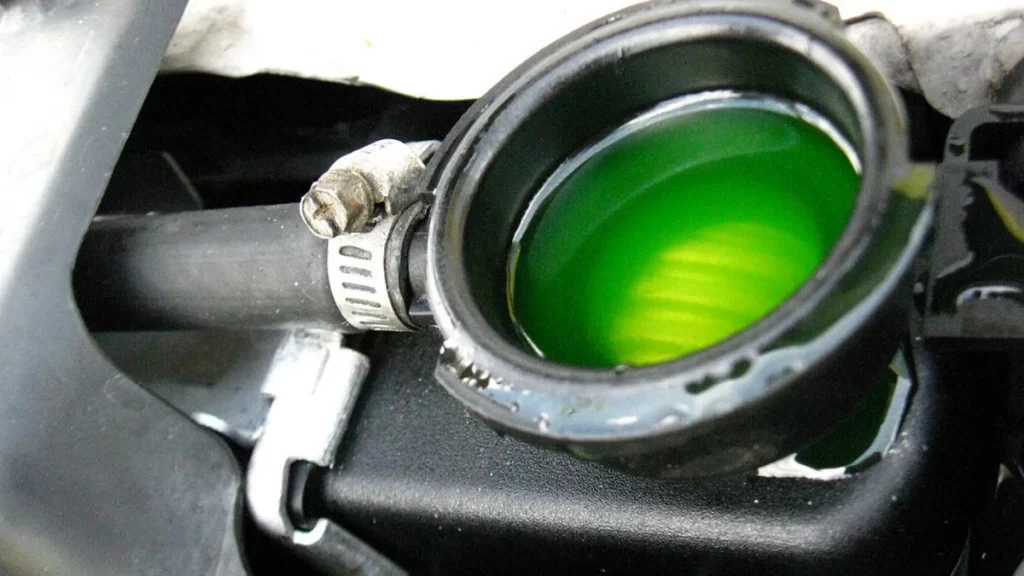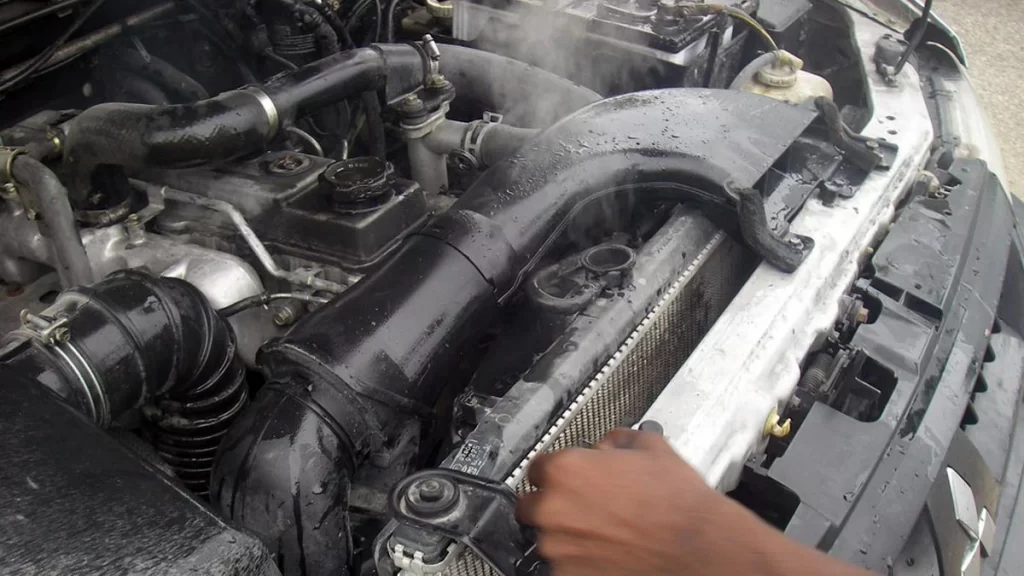Radiator hose leaking is not a simple issue to be neglected. As you always love to see your car in good health, you will always have to check for those issues regularly before you drive long distances.
So, when there is such an issue, you have to repair it by taking relevant measures. This article discusses the uses of radiator hose sealing compounds, which are very beneficial in repairing the leaks in a radiator hose.
What happens when you neglect a radiator hose leak?
Prior to discussing Radiator Hose Sealing Compounds, One of the simplest ways to do irreversible harm to your engine is to ignore leaks in the cooling system. By permanent damage, we mean damage that will result in a significant repair cost or the need to scrap your automobile. Modern engines are built to operate at incredibly high temperatures.
In general, the hotter the combustion chamber burns, the more efficient your engine will be, resulting in higher mileage and power. The combustion gases in your car’s engine may burn at temperatures ranging from 15000F to 40000F, so if you don’t have enough cooling, you’ll have troubles rapidly. Melted pistons, deformed or broken engine blocks, or cylinder heads are examples of these issues.

Allowing a leak in your engine’s cooling system to persist can result in a low coolant level in your car. Low coolant levels can cause incorrect cooling owing to a lack of cooling in your system, resulting in boiling in the engine block and hot patches where fluid no longer reaches.
These hot places can cause high-temperature gradients, putting a lot of stress on your engine’s components, as well as the gaskets and seals.
How to identify a coolant leak in your car?
Keep an eye on the gauges.
At the very least, pay attention to your temperature gauge if you don’t pay attention to any other indicator on your dashboard.
The temperature gauge is frequently the first indicator of a cooling system failure. A high-temperature gauge reading may indicate that coolant has been lost. A high-temperature gauge reading should never be ignored since it might suggest that your engine is overheating. A towing charge is generally incurred when an engine overheats.
The check engine light may also be an early warning of a cooling system failure in newer model automobiles. Pay notice and take the car to a repair to have the trouble codes read when it comes on. When it comes to informing you of a probable leak, the temperature gauge is pretty trustworthy. Be aware that there are other explanations for a hot (or cold) reading on a gauge that has nothing to do with a coolant leak.
The next hint should be a puddle under the automobile.
Puddles aren’t to be overlooked…You’ve seen coolant if you’ve ever seen a pool of neon green or orange fluid under an automobile. You figure that if the puddle isn’t too big, you’ll be alright. Wrong. It’s a terrible indication if you detect coolant under your automobile.
The cooling system is a closed system that allows for evaporation, but there is a leak if coolant is visible on the ground. Don’t be alarmed if you find a puddle under your car now. When you turn on your air conditioner, you’ll see a puddle of condensation. It might possibly have come from another driver’s vehicle. If you observe a puddle, the first thing you should do is check your coolant reservoir.
Make Sure You Have Enough Coolant…
The coolant reservoir is not your radiator, but it is an essential cooling system component. Excess coolant fluid is stored in the coolant reservoir until it is needed. Find your radiator hose if you’re not sure where it is. From the radiator to the reservoir, follow it.
It’s a plastic receptacle with a low and high fill indication on it. It’s also the first location you’ll detect a leak in your coolant reservoir. Even when the car is heated, if you have a coolant leak, the level in the reservoir will not reach the high fill point. Take a minute to fill off the coolant reservoir if you see low levels before driving.
Examine your hoses…
Check your hoses if you’re still certain there’s a leak. Coolant leaks are most commonly caused by hoses.
There are four primary pipes in most automobile cooling systems:
- Heater hose,
- Upper radiator hose,
- Lower radiator hose
You’re in luck if you notice a leak in any of the cooling system hoses. They are inexpensive to repair, and you can usually replace the offender yourself. Proceed to the radiator if the hoses appear to be in excellent condition.
Examine the Radiator…
So far, you’ve checked your coolant, looked beneath the car for pools of fluid, and examined the hoses. Now it’s time to go close to your radiator. The cardboard test is the most basic way to detect a leak in or around the radiator.
Place a piece of cardboard beneath your vehicle and inspect it the following day. You’ll notice coolant on the cardboard if the leak is in the radiator. The radiator’s outside look typically communicates the narrative as well. Coolant and water leaking from the radiator might cause rust to form if there is a coolant leak. Check for visible traces of radiator fluid if you notice rust areas.
How to fix a radiator hose leak?
Fixing a radiator hose leak is typically relatively straightforward. Most auto parts stores provide hoses that are particular to your vehicle, meaning they are made with the proper length, form, and diameter to match your vehicle exactly.

You may begin the replacement process by emptying your vehicle’s coolant once you’ve received the new hose. There should be a drain plug on the bottom of your radiator, generally on the driver’s side, or you may just remove one end of the lower radiator hose.
If you try that, make sure you have a big catch basin underneath the hose since a lot of coolants will flow out rapidly.
Simply remove the old hose and replace it after the system empties of coolant. A spring clamp or a band clamp can be used to secure the hose. In any case, examine the old clamp and replace it with your new hose if it is rusted or weak.
FAQs related to radiator hose sealing compounds.
Will Stop Leak fix a radiator hose?
Stop leak items are intended to plug leaks in radiators, coolant hoses, and gaskets with some sort of substance. On the other hand, sodium silicate is one of the principal constituents in stop-leak products. It’s especially effective when coolant and exhaust gases are both leaking.
Can you flex seal a radiator hose?
The issue with Flex Seal products is that they aren’t designed to resist the extreme heat and pressure that a radiator line is subjected to. That hot coolant may have up to 16 pounds of force behind it, which is enough to cause it to spray quite a distance and scorch anybody around.
Why does my radiator hose keep leaking?
Coolant Hose Leaks: What Causes Them? Even the most outstanding hoses will, however, wear out over time. Hose leaks are the most typical consequence of this, and they occur when the hose develops cracks or abrasions. The flaws become more prominent over time, allowing the coolant to leak.
We hope that our explanation of “radiator hose sealing compounds” has provided you with the information you were looking for. Please feel free to ask any further questions in the comments section below. We will be happy to assist you in any way we can. If you have any question about how to find best Loaner may be found at this link. Thank you for your kind words.
